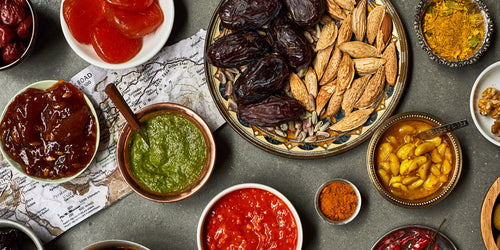Your Cart is Empty
Like eggs, chocolate, and coffee, coconut milk is one of those ingredients that’s polarized the health community. People on vegan and paleo diets love it as a rich alternative to cream or milk. And nutritionists tell us that it’s chock full of amazing health benefits that will make us all live forever. That is, unless it kills us in our sleep.
Last April, Harvard professor Karin Michels went so far as to call coconut oil, the saturated fat that gives coconut milk its heft, “pure poison,” citing its saturated fatty acids as a risk factor for heart disease. That hasn’t stopped the wellness industry from cashing checks on the fruit’s purported nutritional value, nor food manufacturers from devising increasingly bizarre coconut products that capture its newfound cachet, but little of its remarkable flavor.
My best advice: Don’t worry and let the nutritionists fight it out. Regardless of its vitamin and fiber content, coconut milk is indeed rich with fat, so you probably don’t want to eat it three times a day. But in moderation as part of a varied diet, it’s a beautiful thing, and versatile enough that I always keep a half-dozen cans in the pantry. So look past all the health claptrap and focus on the best-tasting coconut milk you can find.
Once a canned speciality limited to Asian and Latin American markets, coconut milk has flooded groceries of every stripe: in milk cartons, pouches, and artfully designed tins. This is a beautiful thing, but it means lots of confusing options for a home cook. Is cartoned coconut milk the same as canned? Are there any signs on the label to look for? Here’s the ins and outs of coconut milk in all its forms.
How coconut milk is made
No matter how it’s packaged, all coconut milk begins the same way. First, the watery core is extracted for coconut water. Then the white mature coconut meat is soaked in fresh water, which is then blended into a puree and strained several times to ensure it’s smooth.
The difference between coconut milk and coconut cream solely comes down to ratios; coconut cream has twice (or more) the amount of coconut for added richness and body. Cream of coconut, the sweet stuff you add to tiki drinks, is something else entirely—coconut puree with a ton of added sugars and gums.
Can or carton?
Growing Western interest in coconut as a non-dairy milk replacement has lead to the advent of milk cartons full of coconut milk, sold in the dairy aisle right next to soy and rice milks. Since it’s formulated to imitate whole milk, this cartoned product is considerably diluted compared to canned coconut milk, and can’t be substituted in recipes. It also usually contains additives like lecithin and locust bean gum to smooth out its texture, and even sugars and flavorings for a closer-to-dairy vibe. That might be fine in your cereal bowl, but it’s not what you want for your khao soi.

There are, however, cartons of coconut milk that are just that: pure coconut. Packaged in heat-treated paper cartons, they’re the only shelf-stable coconut milk product that doesn’t require any kind of preservative. Brown Betty, a Latin American and Caribbean food brand, makes a wonderful preservative-free block of creamed coconut, which is mostly solid at room temperature and can be used like butter, or diluted with water for super-fresh coconut milk.
The best canned coconut milk
When it comes to canned coconut milk, follow this simple guideline: Always opt for the Thai brands.
These cans are specifically produced for Thai consumers, not fat-phobic Americans, and as a result taste way more coconutty with richer textures. If you compare Thai coconut milk brands to their Western-facing equivalents, labels like Chaokoh and Aroy-D contain a bit more fat, which really means more coconut per can. They’re also packed without any stabilizers like guar gum, so they leave a cleaner feeling on the tongue. Latin American and Caribbean coconut milk brands give the Thai cans a run for their money, but to my palate, the Thai options taste a little more fresh and tropical.

Chaokoh is my go-to. The milk is consistently full-bodied and faintly floral, and it pretty much ensures a tasty curry on my stove. For coconut cream, Aroy-D or Savoy are my top picks. But if I don’t have any on hand, I make my own by sticking a can of Chaokoh in the fridge for a couple hours, then carefully opening it while jostling the can as little as possible. Chilled Chaokoh separates a bit into a heady layer of coconut cream and thinner, cereal-ready pool of milk below. The luscious cream can be whipped just like heavy cream or used in small quantities to enrich any sauce, smoothie, or blended drink. You can’t pull this trick off with American brands like Thai Kitchen, as the added stabilizers keep the fat from separating.
Get cracking
Now that you’re armed with a giant can’s worth of coconut knowledge, put it to work with these coconut-enriched recipes.
Recipe: Muslim-style beef khao soi







